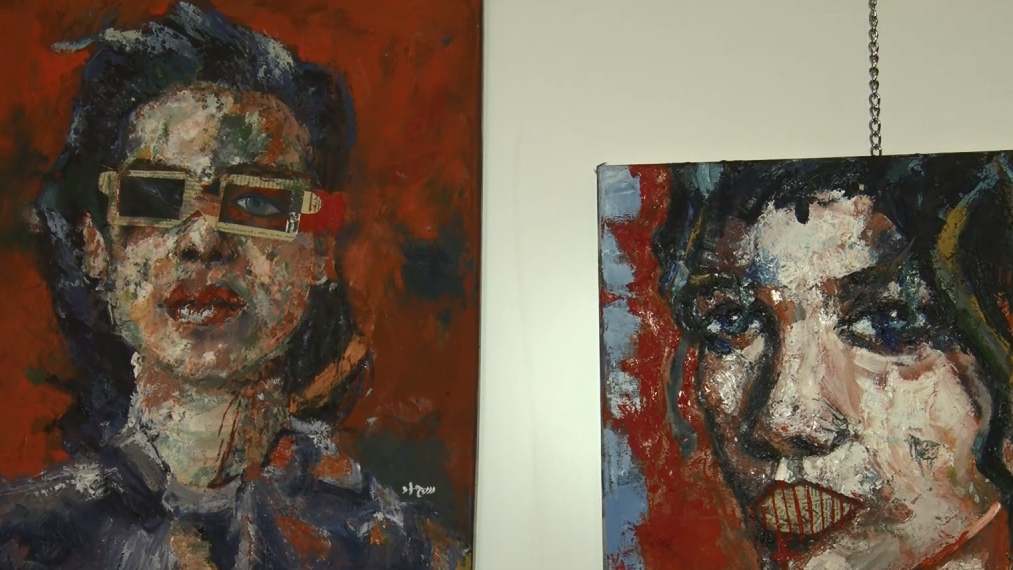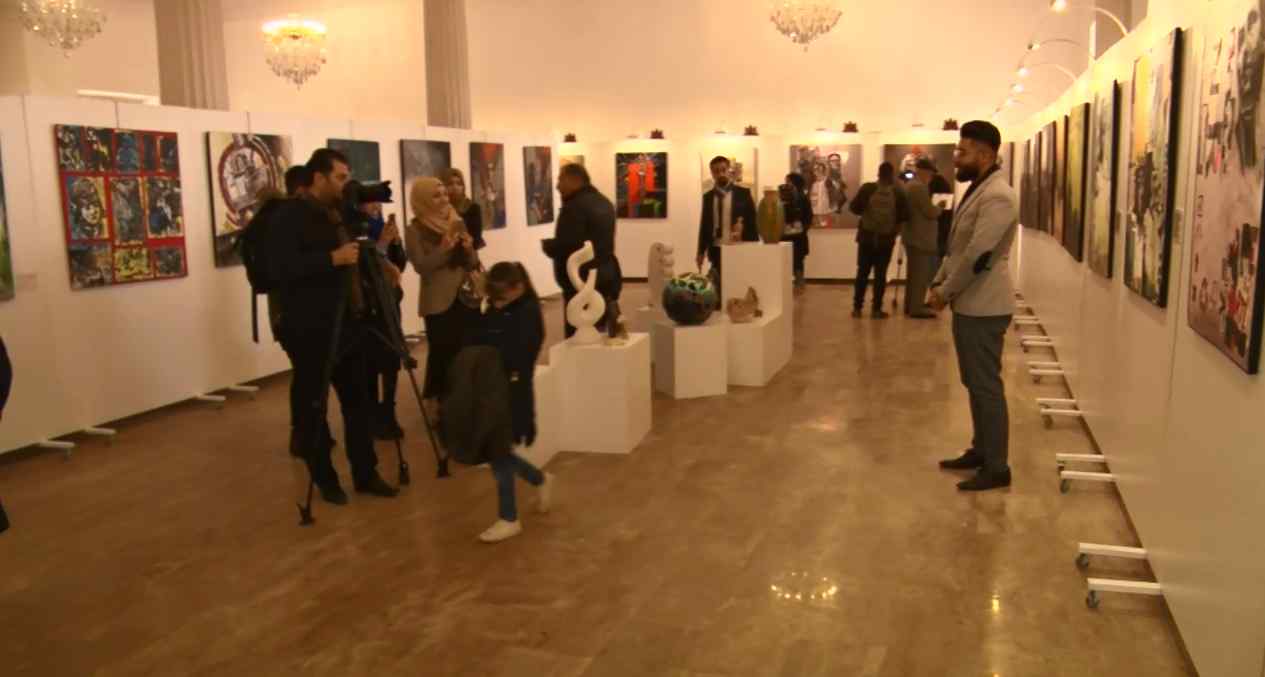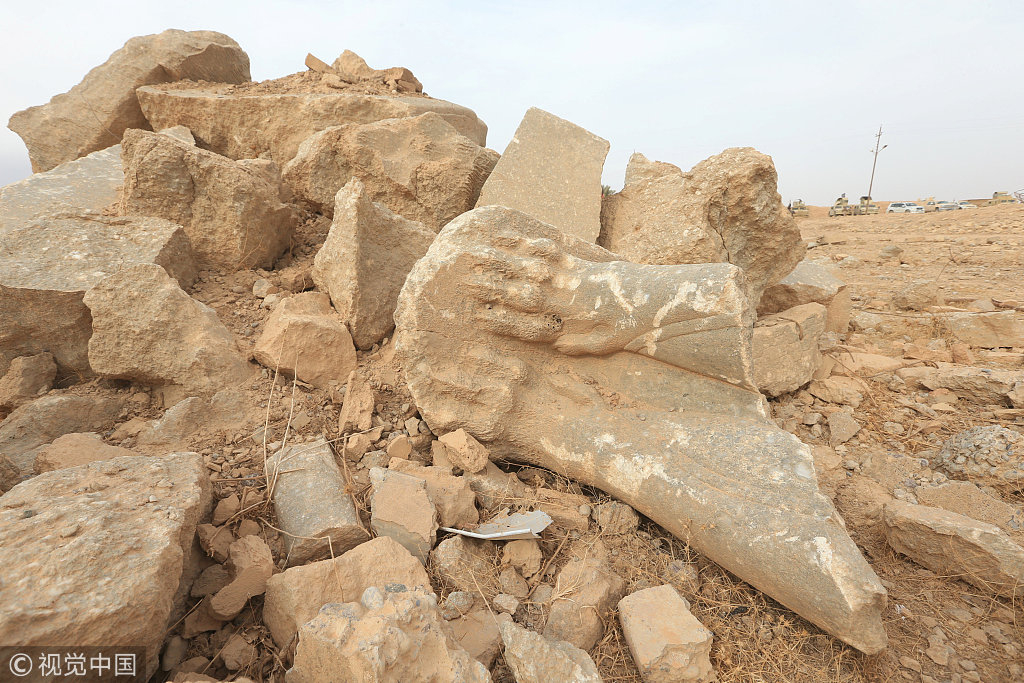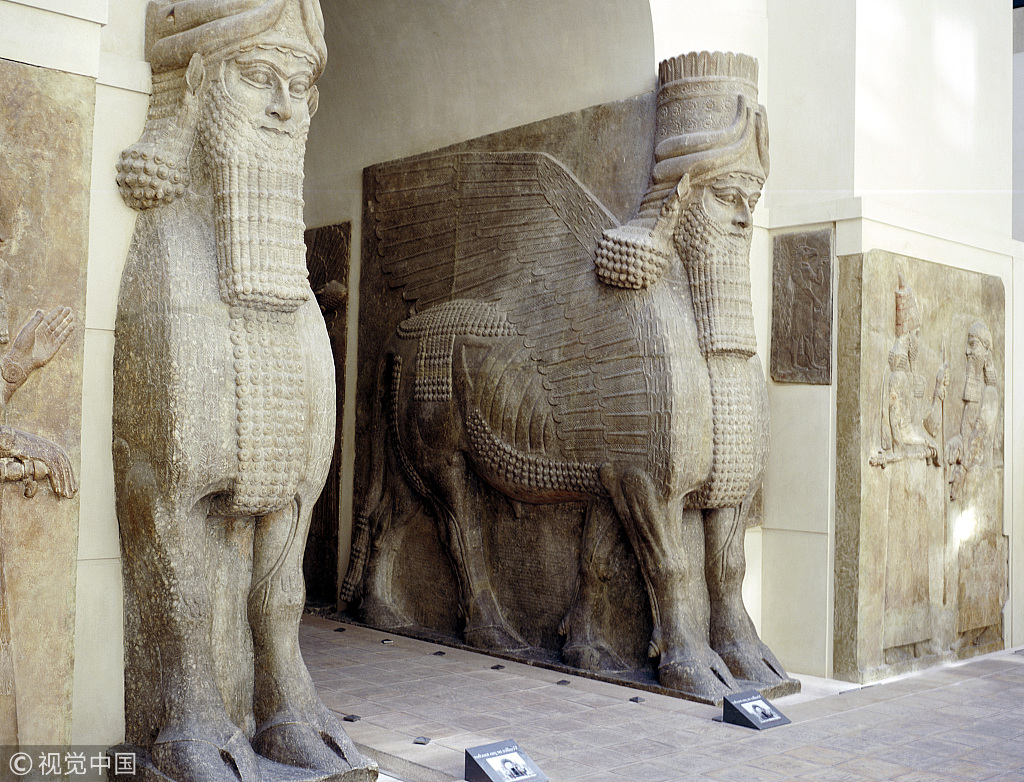
Art
10:57, 30-Jan-2019
Mosul Museum hosts modern art, its treasures ruined by ISIL
CGTN

The celebrated Mosul Museum in Iraq has not recovered since ISIL group jihadists ravaged its ancient treasures several years ago, but part of the complex has reopened to showcase more contemporary art.
On Tuesday, for the first time since ISIL overran the city in 2014, visitors could wander the grandiose royal reception hall, which forms part of the museum.
The building is considered the oldest government complex in Mosul and was recently renovated to host the 29-artist exhibit, titled "Return to Mosul," a member of the organizing Al-Ghad Radio station told AFP.

Visitors to the Mosul Museum, which reopened on January 29, view a contemporary art exhibition. /AFP Photo
Visitors to the Mosul Museum, which reopened on January 29, view a contemporary art exhibition. /AFP Photo
The northern Iraqi city served as ISIL's brutal seat of power for three years, before Iraqi troops recaptured it in 2017.
Much of Mosul's east has made a modest recovery, but the west – home to the Old City and the museum –remains in ruins.
The exhibit was "proof that war didn't kill Mosul and that, on the contrary, it's living a full-on renaissance," said Huda Hani, a 25-year-old visitor on Tuesday.

Remains of wall panels and colossal statues of winged bulls, destroyed by ISIL militants are seen in the Assyrian city of Nimrud, on the eastern bank of the Tigris River, south of Mosul, Iraq, November 16, 2016. /VCG Photo
Remains of wall panels and colossal statues of winged bulls, destroyed by ISIL militants are seen in the Assyrian city of Nimrud, on the eastern bank of the Tigris River, south of Mosul, Iraq, November 16, 2016. /VCG Photo
Buttoned up in warm jackets, families walked through the hall to look at the paintings and sculptures, many of which feature themes of home, return, or conflict.
The rest of the museum, however, remains closed for security reasons, said its director Zeid Saadallah.
"You have to protect what is left," he told AFP.
During its bloody reign over Mosul, ISIL released a video of its jihadists attacking the museum with sledgehammers and pneumatic drills, destroying priceless pre-Islamic artifacts that it considered insulting to religion.
The damaged pieces including two imposing "lamassu" statues, Assyrian winged bulls with human faces.

Assyrian sculptures of human-headed winged bulls at the palace gateway, Palace of Sargon II, Khorsabad. They're part of the collection at The Louvre, Paris. /VCG Photo
Assyrian sculptures of human-headed winged bulls at the palace gateway, Palace of Sargon II, Khorsabad. They're part of the collection at The Louvre, Paris. /VCG Photo
ISIL also blew up the Assyrian city of Nimrud, the ancient city of Hatra, and the centuries-old desert city of Palmyra in neighboring Syria.
But in addition to destroying artifacts, the jihadist group trafficked valuable pieces to finance its activities.
In partnership with Google, 3-D printer BQ, and other organizations, Mosul's artists and technicians are looking to print three-dimensional versions of the smashed pieces.
And ALIPH, or International Alliance for the Protection of Heritage in Conflict Areas, a heritage-focused project led by France and the UAE, has dedicated 480,000 US dollars to help in the first phase of the museum's reconstruction.
(Top Photo: Modern art pieces displayed at an exhibition at the reopened Mosul Museum. /AFP Photo)
Source(s): AFP

SITEMAP
Copyright © 2018 CGTN. Beijing ICP prepared NO.16065310-3
Copyright © 2018 CGTN. Beijing ICP prepared NO.16065310-3